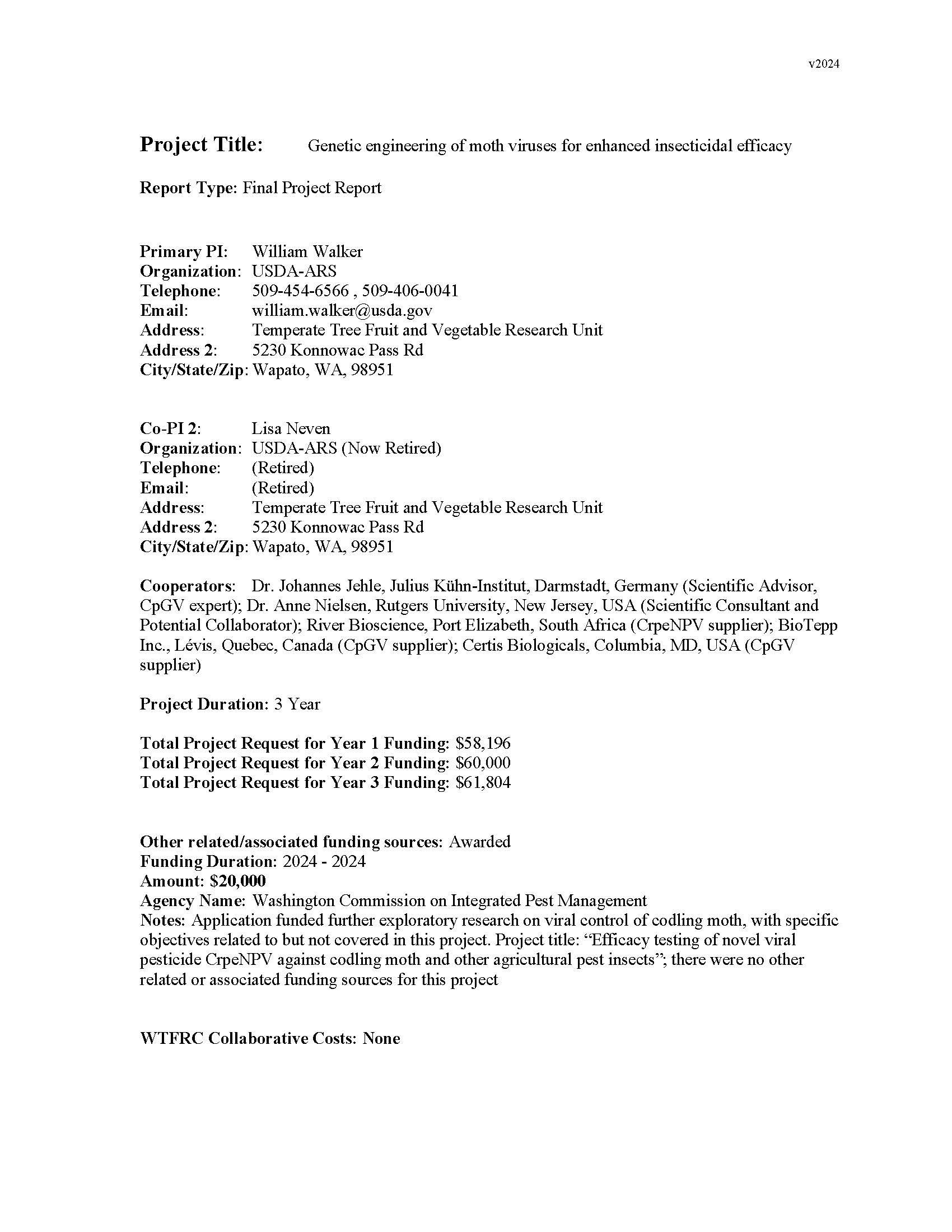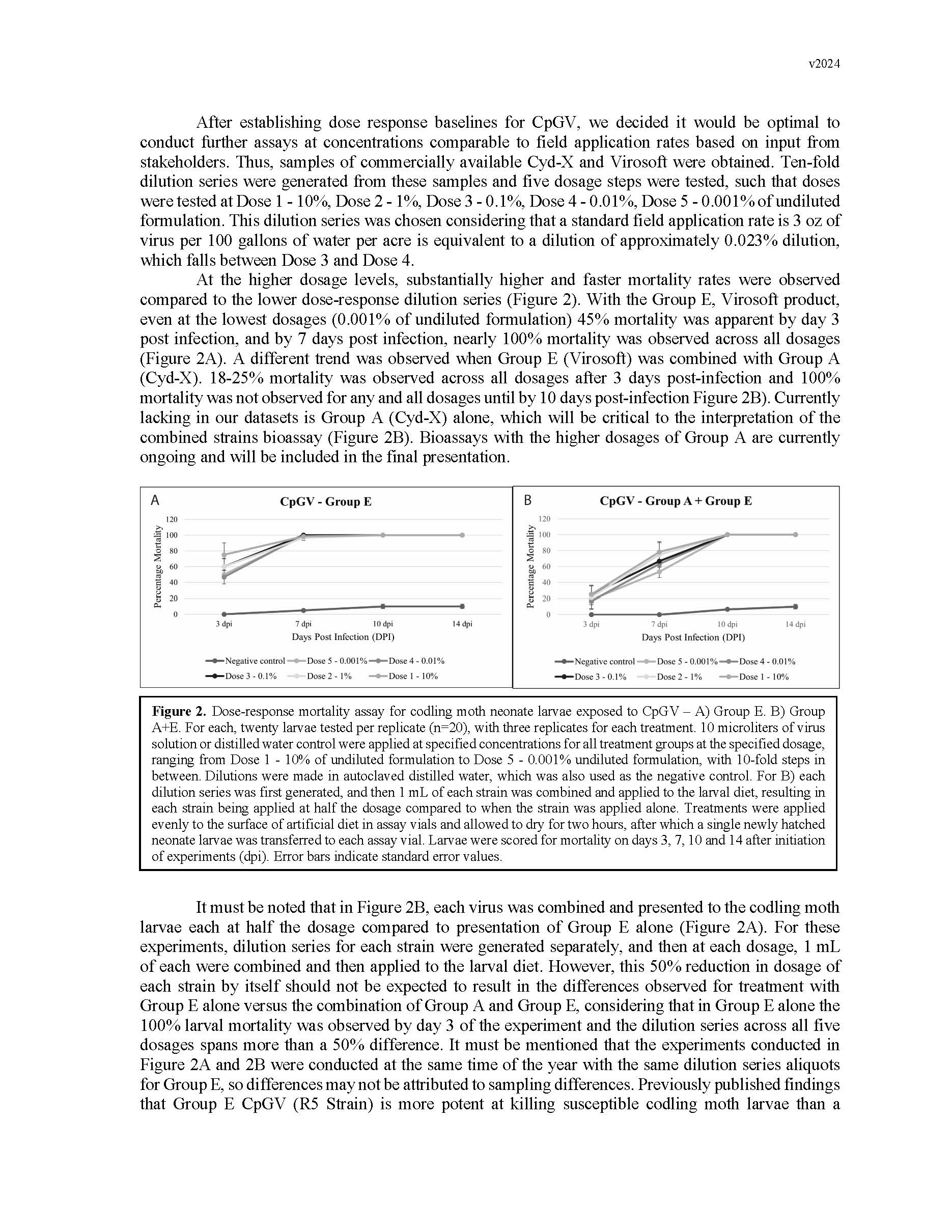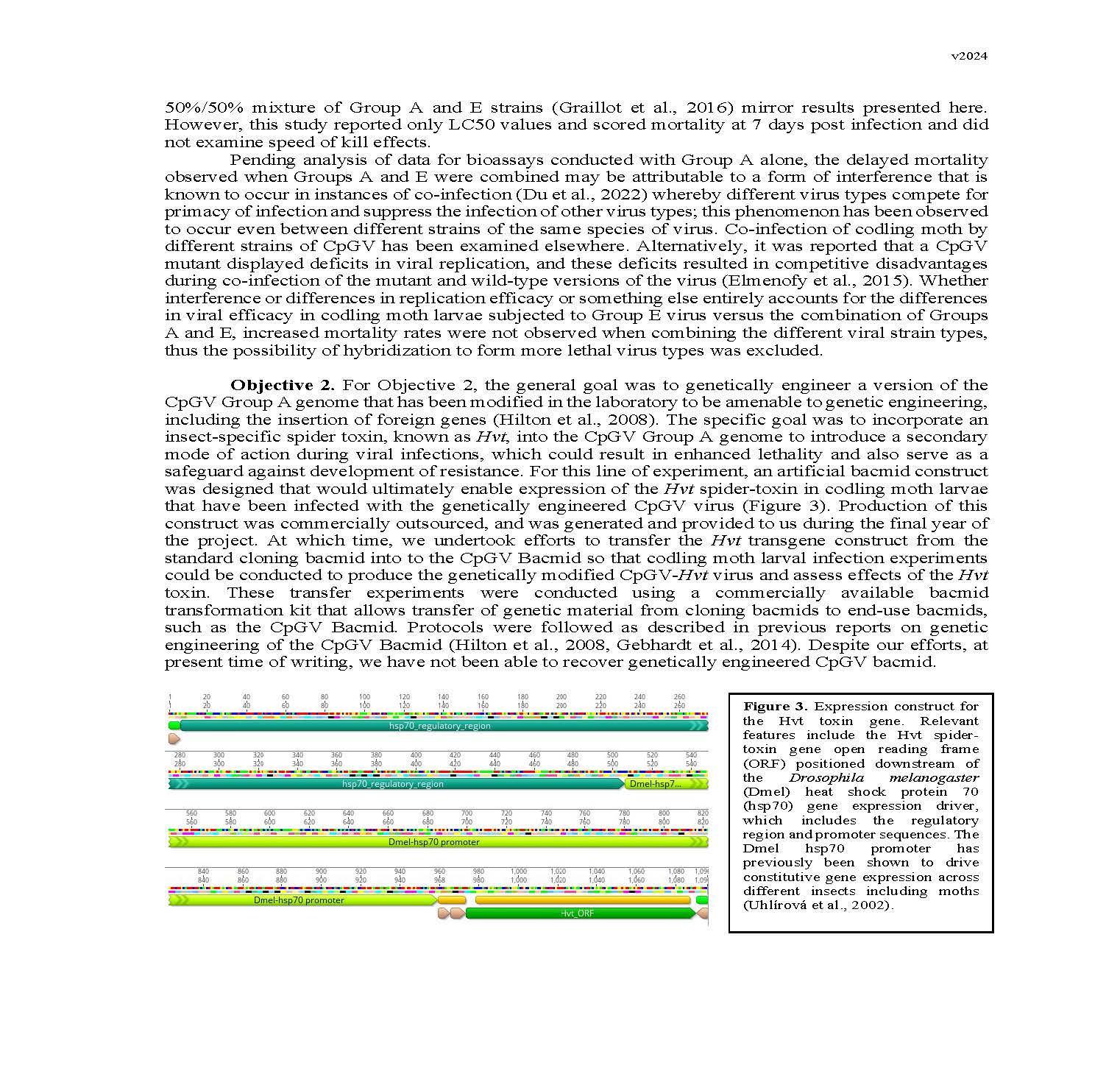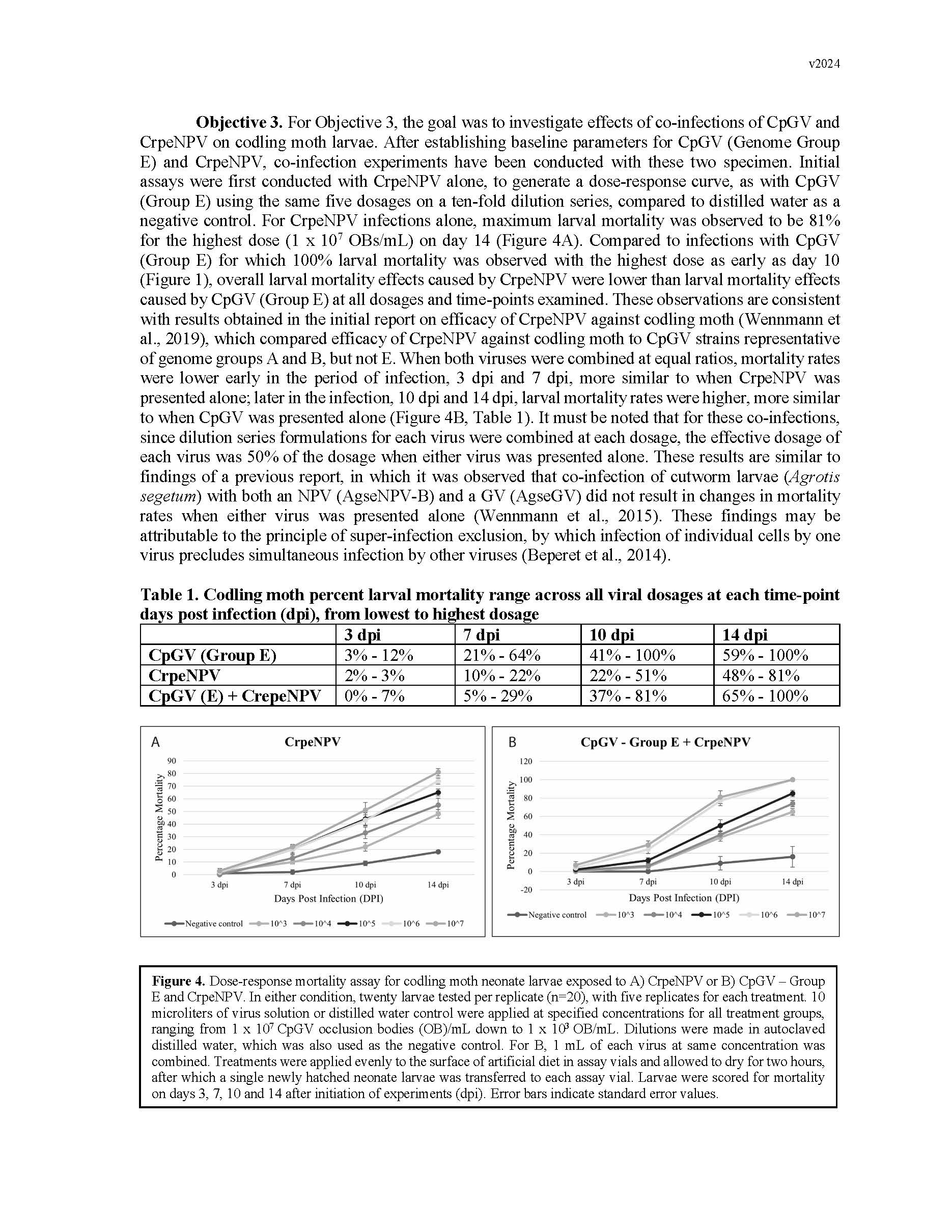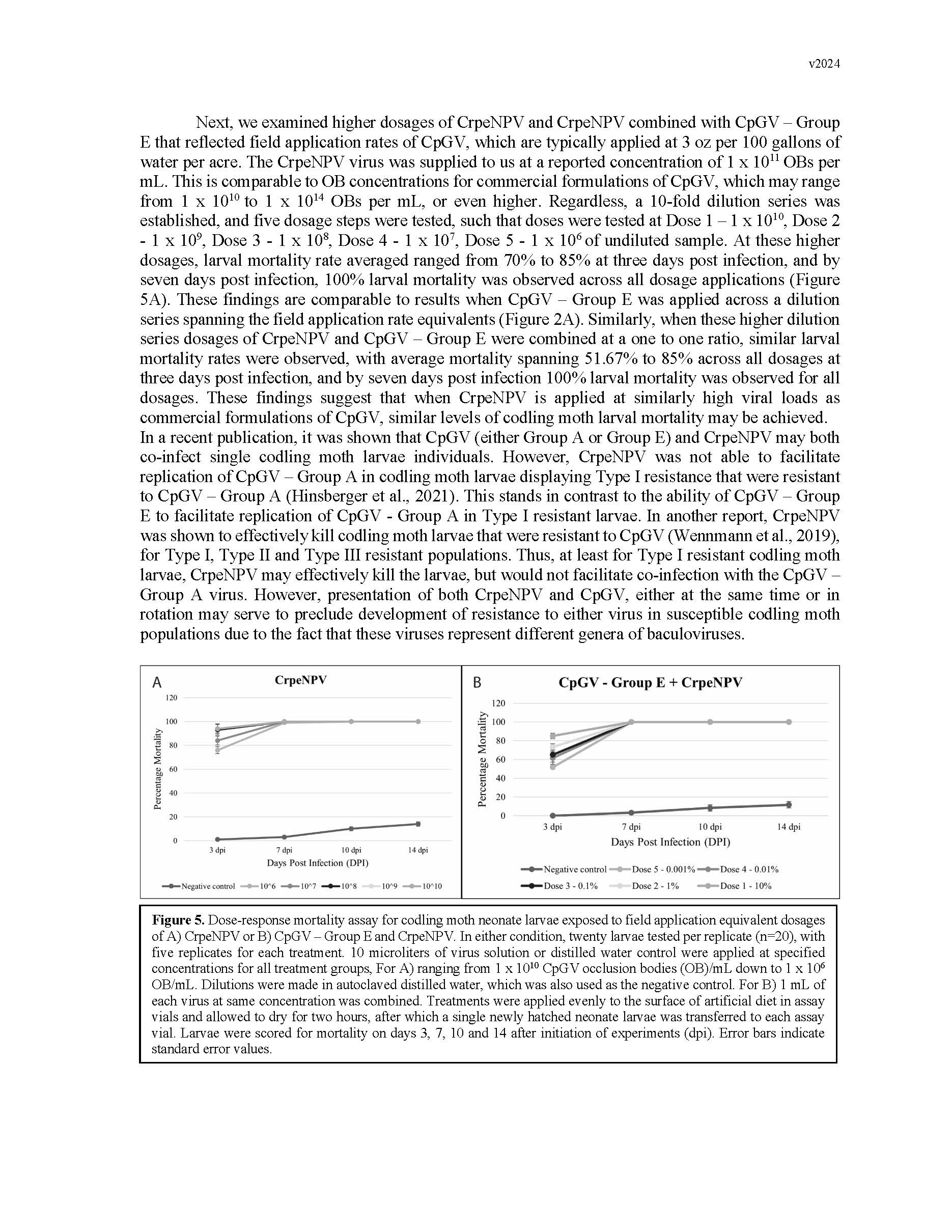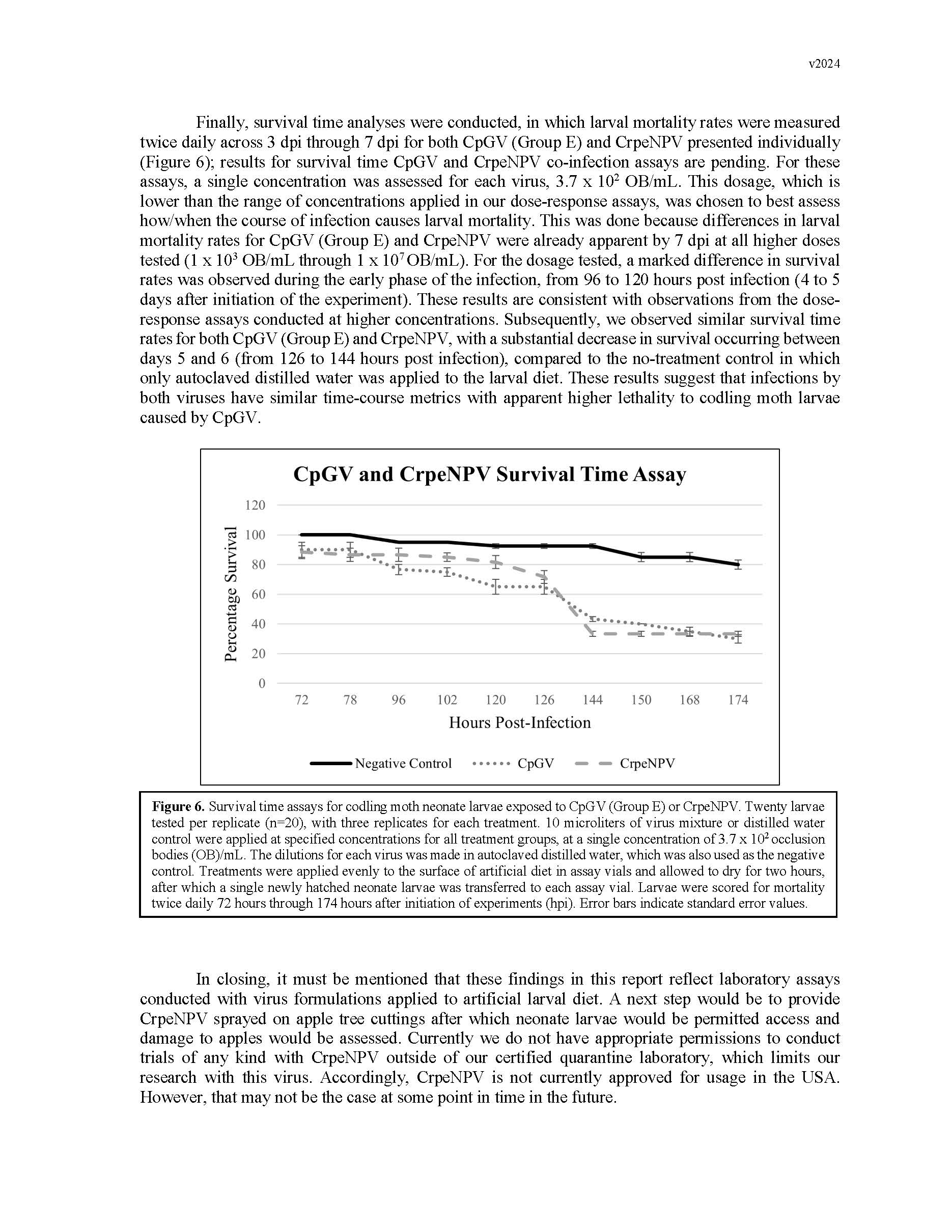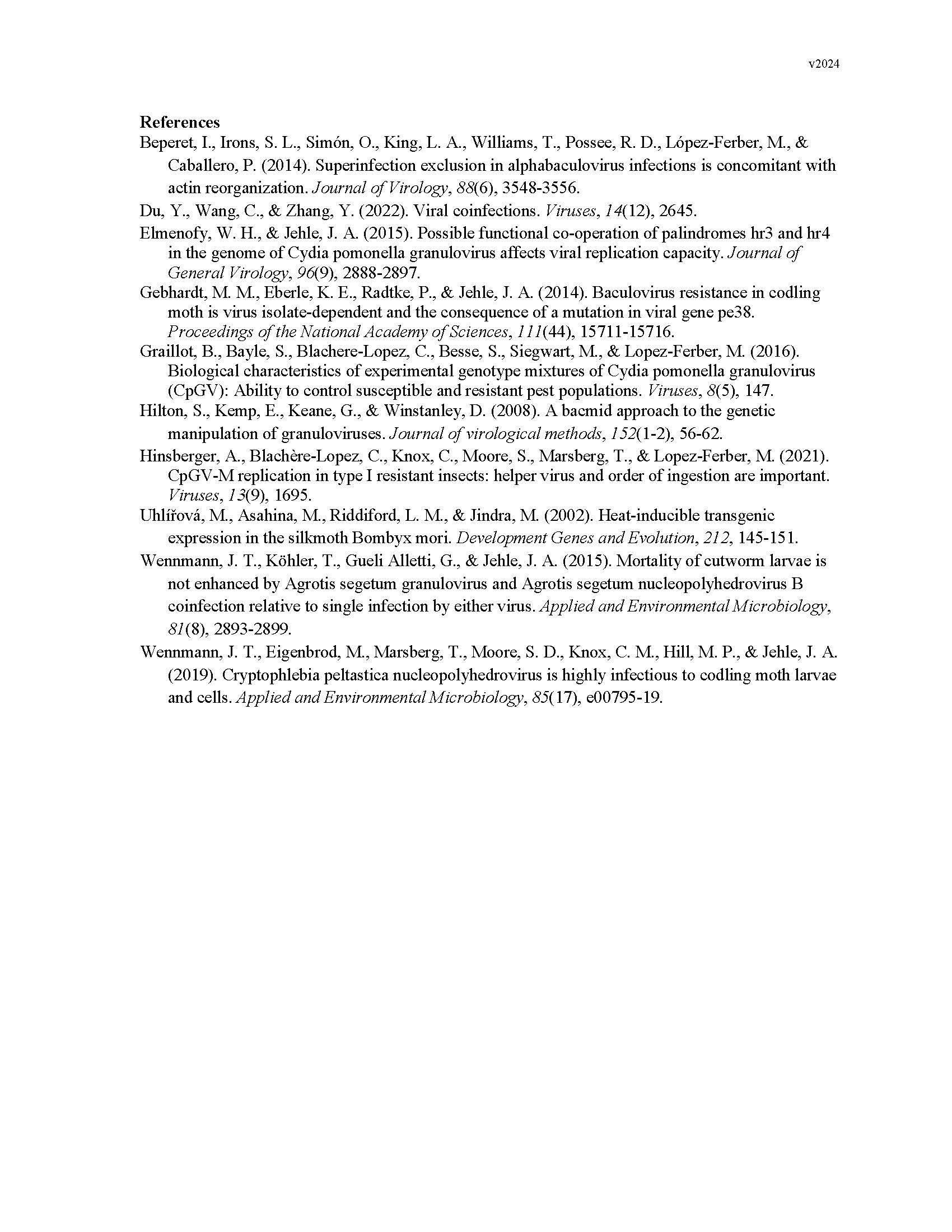Genetic engineering of moth viruses for enhanced insecticidal efficacy
Author: William Walker
Published: 2025
Summary: The codling moth granulovirus (CpGV) has been used for decades, primarily in organic apple orchards, to control codling moth by killing larval hatchings before or shortly after they enter the apple. However, in recent years, the first scientific report of codling moth resistant to CpGV in the USA, and indeed right here in Washington State, was published. Since then, concerns and suspicions have been mounting that the extent of CpGV-resistant codling moth in Washington is greater and more widespread than the published record indicates. Novel approaches and solutions for pest management of codling moth, especially in organic tree fruit orchards, are thus needed. To address this issue, we proposed a three-pronged approach to research ways to improve codling moth management based on the use of insect viruses. First, we sought to investigate the hypothesis that novel CpGV genotypes generated through coinfection of codling moth larvae by mixed CpGV genotypes may result in higher or faster rates of larval mortality. We approached this with larval co-infection studies with two commercially available CpGV formulations, each representing a different strain of the virus. In our studies, we did not observe enhanced rates of larval lethality when both strains of CpGV were simultaneously presented to the larvae, compared to presentation of either strain alone. Second, we sought to genetically engineer a modifiable version of the CpGV genome to include an insect-specific spider toxin. This would be done to introduce an additional mode of action directly into the virus as a means to promote enhanced lethality and/or counter-mechanisms to the development of resistance in virus-susceptible codling moth populations. Currently, our efforts to generate genetically engineered clones of the CpGV genome have been unsuccessful. This endeavor remains a work in progress. Third, we sought to explore further the efficacy of a novel baculovirus, known as CrpeNPV, against codling moth larvae. CrpeNPV was discovered in South Africa in the litchi moth, which is closely related to the codling moth, and subsequently reported to be able to kill codling moth larvae, including those that were resistant to CpGV strains. We confirmed dose-response efficacy of CrpeNPV against locally sourced codling moth and demonstrated that CrpeNPV is equally effective as CpGV in killing codling moth larvae at comparable field application rates of the virus. Finally, when CrpeNPV was combined with CpGV we did not observe enhanced larval mortality compared to when either virus was presented alone, though inhibitory effects were not observed either. Currently, to our knowledge, the CrpeNPV is not approved for usage in the USA as a biopesticide. If that status changes, it may be considered in future applications as part of effective codling moth management strategies, including management of resistance to CpGV.
Keywords:

